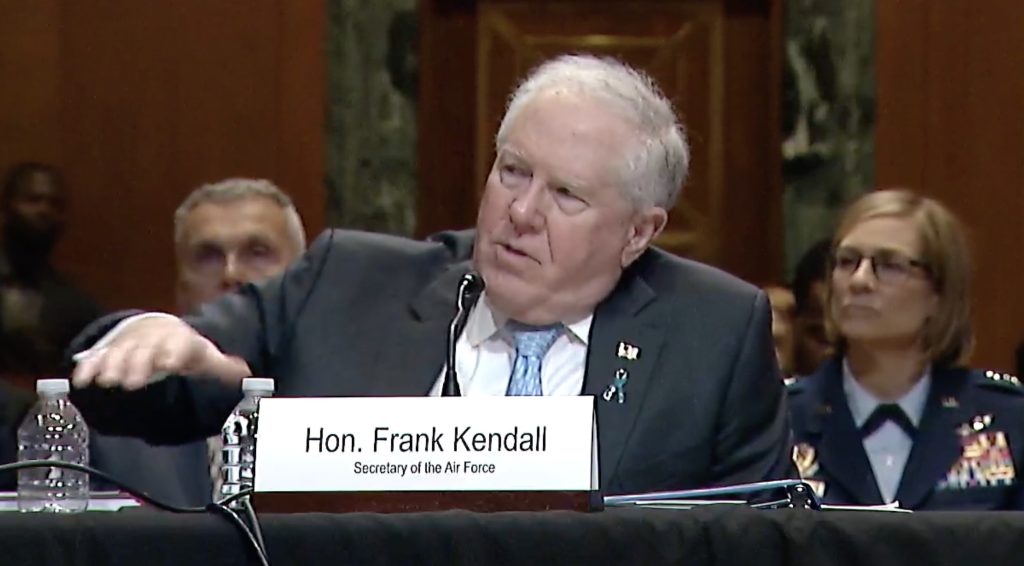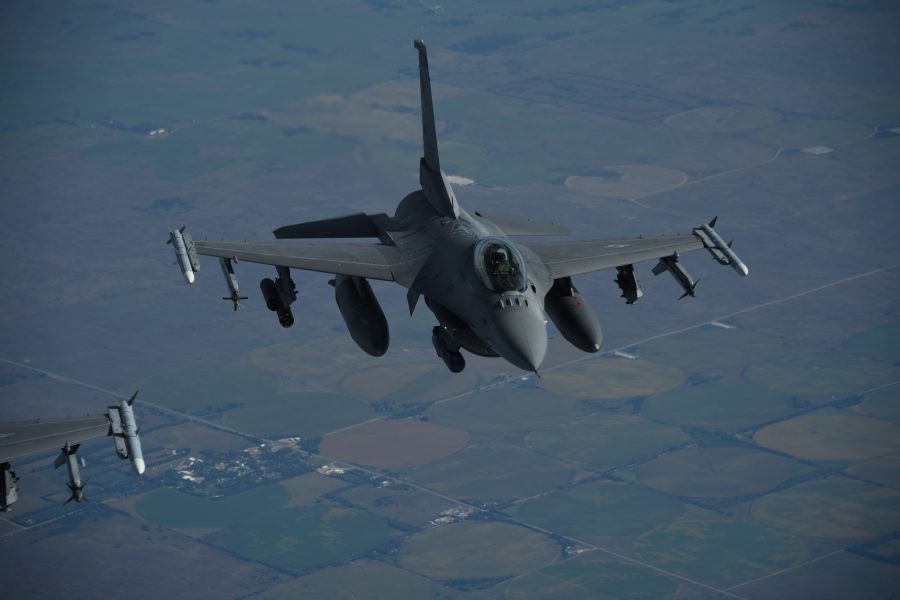An autonomously-piloted F-16 will fly this year with Air Force Secretary Frank Kendall on board, giving the service’s top civilian an up-close look at a critical effort for the Collaborative Combat Aircraft program.
The Air Force is set to modify six F-16s to test autonomous tech and software at Eglin Air Force Base, Fla., as part of the VENOM (Viper Experimentation and Next-gen Operations Model – Autonomy Flying Testbed) project. The first three fighters arrived earlier April 1. Once transformed, the jets will still have pilots in the cockpit to engage in real-time autonomy, retaining control over specific algorithms during test flights.
One F-16 will also have a distinguished visitor.
“I’m going to take a ride in an autonomously flown F-16 later this year,” Kendall told members of the Senate Appropriations defense subcommittee during an April 9 budget hearing. “There will be a pilot with me who will just be watching, as I will be, as the autonomous technology works, and hopefully, neither he nor I will be needed to fly the airplane.”
Kendall added that the project has been “moving forward very well” but did not offer any more details on when the flight will take place. An Eglin spokesperson told Air & Space Forces Magazine that project managers “don’t want to speculate” on when the F-16s will be modified and ready to fly.

VENOM first came to light last year when the Air Force requested nearly $50 million in the fiscal 2024 budget and officials detailed their hopes for it. In the 2025 budget, the service is seeking just under $17 million for the effort, which will feed into Collaborative Combat Aircraft, the program to pair unmanned, autonomous drones with manned fighters like the planned Next-Generation Air Dominance (NGAD).
Kendall and other Air Force leaders have projected a fleet of 1,000 to 2,000 CCA drones. In the next five years alone, the Air Force wants to spend $8.9 billion on CCAs, starting by selecting two or three contractors to move forward on the program.
In contrast with its budget request last year, officials now say the first mission for CCAs will not be spectral warfare.
“The initial role for the aircraft was going to be counter-air, but it will have the potential to do other things,” said Kendall.
Lt. Gen. Richard G. Moore Jr., deputy chief of staff for plans and programs, echoed Kendall, stating that the current focus is on “increasing the number of weapons in a formation.”
“The one that we’re going to focus on first is the ability to augment the shooters and to add additional rails to the formations that we send forward,” Moore said during an April 9 AFA Warfighters in Action event. “There are other things like electronic warfare or ISR or even tanking, there are a lot of things that you could go to, but that’s not our focus.”
Experts have described CCA as central for the service’s plan to deter conflict and impose costs on a high-level adversary like China. These uncrewed systems could act as force multipliers, enhancing sensor and weapon deployment in contested regions and bolstering the effectiveness and survivability of crewed stealth aircraft.
“The first increment, which we’re trying to get out quickly, is sort of a minimum viable product,” said Kendall. “Then, the second follow-on increments will add additional capabilities.”
Kendall added that CCA production will be managed carefully to control costs. The service intends to keep the price to “a third, or a quarter of the cost of F-35,” which would be less than $28 million per aircraft.


